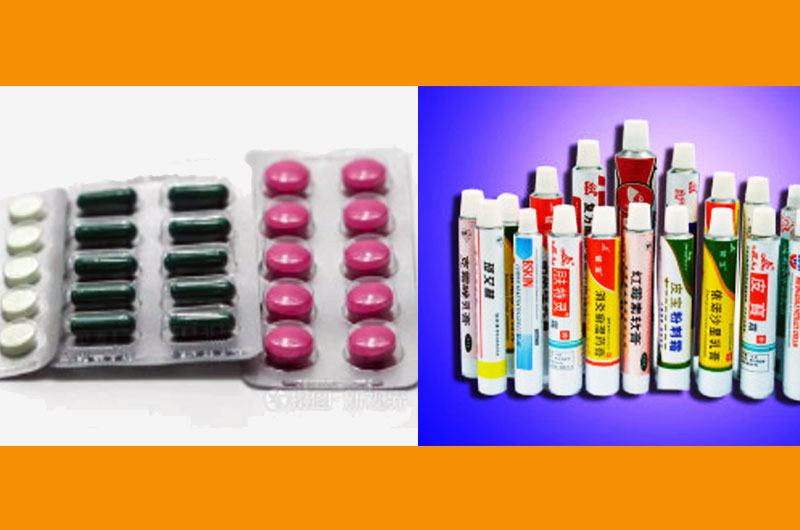Applications and Selection of Aluminum Materials for Pharmaceutical Packaging
Currently, commonly used aluminum products for pharmaceuticals (including aluminum foil and aluminum tubes) are widely applied in the packaging of various solid and semi-solid formulations, such as tablets, capsules, granules, creams, ointments, and gels. Additionally, aluminum products can be combined with plastic materials to form aluminum-plastic composite closures and used in conjunction with glass containers.

Pharmaceutical Packaging Aluminum Foil
Pharmaceutical packaging aluminum foil is a high-quality packaging material made from electrolytic aluminum that has been rolled out, offering good ductility and uniform thickness, typically used for packaging tablets, capsules, and granules, with a thickness generally below 0.2mm. Aluminum foil can be used alone, but is more often laminated with materials such as paper, glass, and plastic. Treated aluminum foil exhibits excellent ductility; a tin coating can enhance its corrosion resistance; and the aluminum oxide film that forms on the surface can effectively prevent further oxidation.
Currently, aluminum foils used for pharmaceutical packaging are mainly categorized into three types: 8079 aluminum foil, 8021 aluminum foil, and 8011 aluminum foil. These three types differ in their metal element content and thickness. 8011 aluminum foil, also known as PTP aluminum foil, has a thickness range of 0.016-0.04mm, features a higher silicon content, and contains manganese and iron, showing good strength and corrosion resistance, commonly used for packaging capsules or tablets, as well as sealing liquid medications (such as antibiotics and infusion bottles).
8021 aluminum foil, typically referred to as blister foil, has a thickness of 0.04mm-0.065mm and is suitable for packaging light-sensitive or moisture-sensitive medications. 8079 aluminum foil is relatively more expensive and has fewer applications.
Although aluminum foil is widely used in pharmaceutical packaging, it is prone to pinhole formation during use, which can reduce its barrier performance. Therefore, aluminum foil is often compounded with high molecular plastic polymers, paper, or other metal sheets. This composite material combines the shielding properties of aluminum foil with the strength of paper and the heat-sealing capabilities of plastic, further enhancing its barrier capabilities against moisture, gases, air, light, and bacteria, thereby greatly expanding its range of applications.
In pharmaceutical packaging, aluminum foil is mainly used for blister packaging of tablets and capsules, providing good barrier properties while being easy to pierce for dosing. Blister packaging involves placing the medication into cavities made of plastic, and then sealing the printed and coated aluminum foil with protective agents and adhesives through heat sealing. The blister aluminum foil can undergo printing, coating, drying, and other processes on a single device, making it suitable for large-scale production. Generally, the protective layer components in blister packaging are primarily acetate resins to ensure a smooth and even surface, while adhesives commonly used are thermoplastic adhesives such as polyurethane or vinyl. The main aluminum foil used is 8011 aluminum foil.
Pharmaceutical Packaging Aluminum Tubes
Soft aluminum tubes are specifically designed for packaging creams, ointments, and gels, having been treated for softness. Currently, the third-generation aluminum tubes are widely used, featuring improvements in internal coatings, thin top seals, and end coatings, significantly enhancing their sealing and safety performance.
Metal soft tubes are an excellent packaging choice, being easy to open and allowing for controlled dosing by enabling the contents to be dispensed in portions while providing good resealability. They effectively protect the medication and reduce the risk of contamination. For viscous gels, creams, ointments, and pastes, filling these soft tubes is very convenient. Compared to plastic packaging, treated metal materials offer better sealing properties. However, once the contents are expelled, it is difficult for the metal tube to return to its original shape, which may affect its appearance. Additionally, to enhance chemical stability, the inner walls of metal tubes typically require a resin coating.

